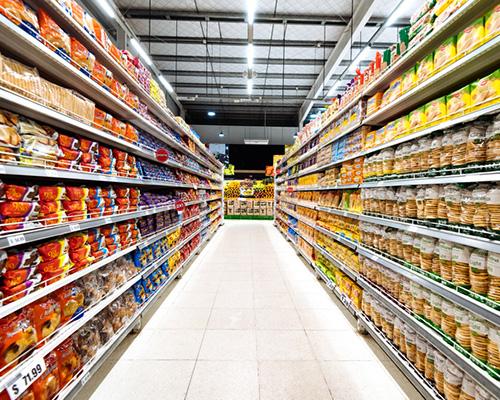It’s Time to Give Grocery Categories a Customer-Centric Refresh
The most important products to a customer last year are not the same as today. Lockdowns and pantry loading aren’t driving panicked purchase decisions. Items that were once in high demand now have appropriate stock levels. And with at-home food needs changing because of eased restaurant restrictions, basket size and composition will also look different moving forward.
These shifting dynamics are prompting grocery retailers to take a critical look at assortment priorities and category performance, in tandem with gaining clarity into what today’s consumers really want. In working closely with FMCG retailers, I’m frequently having conversations about assortment, specifically as it relates to managing both the brick-and-mortar shopper and the one that shops online.
Retailers are coming to terms with the fact that omnichannel isn’t going away, and for this reason, they’re rethinking everything.
Category Strategies Must Incorporate the Online Shopper and Their Preferences
While shortages and empty aisles may soon be a distant pandemic memory, omnichannel shopping is here to stay. Curbside grocery pickup wasn’t new, but it was exposed to a broader customer base during COVID. First-time users have seen how wonderfully convenient it can be, and they’re not going back. I’m right there with them.
My grocery retailer of choice is a 20-minute drive from my house, but I’ve never stepped foot in its physical store. I shop the retailer’s online platform and it retains my online grocery list, from week to week. The retailer shows me what’s new or on sale based on its knowledge of my buying behavior, making it easy to add incremental items to my cart. Then, I schedule my pickup time, pull up to the designated curbside spot, have my groceries loaded in the back, and I’m on my way home.
Here’s my point: If that store looked only at the customer demographics in its immediate area, I’d be completely missed. My preferences and purchases wouldn’t be factored into category planning. But because the retailer mines sales data to understand all of its shoppers, I’m happy to make the 40-minute round trip to be delighted by the convenience and product selection.
It’s important to note that it’s not the absence of a curbside offering that pushed me away from my local grocer. Rather, I don’t shop online at the store closest to me because I don’t like the substitutions offered — and that’s tied to assortment. When I’ve shopped online there, I ended up with a bag full of stuff I didn’t really want. Why is this? Because the retailer hasn’t grasped the nuances of in-store and online shopper preferences.
My anecdotal story is part of a bigger narrative of consumers rethinking their “new normal” habits, and retailers must refine their categories in response.
Rationalize Your Assortment While Collaborating with CPGs
As we emerge from the pandemic’s disruption, retailers are wise to use this time to perform a SKU rationalization. This will ensure the right products are in the right places, online or in store, where the right customers shop. Not only that, but if done right, a SKU rationalization could present an upsell and margin-increase opportunity.
A retailer recently explained his thought process for SKU rationalization, saying, “If a product sitting on my shelf needed to be dusted off coming out of COVID, it makes sense to delete it from my assortment.” If there are items that languished in your stores or supply chain during the pandemic, removing them is probably a smart move, but it must be done wisely. You have to be careful that a product isn’t tied to a specific shopper segment, especially your most loyal customers.
Will a majority of the sales for that product transfer to something else that you keep in the assortment? Evaluating the likelihood of “same-store switch” before removing a product from a category is key.
This is also being done on the CPG side, as many brands saw a strain on supply chains during the pandemic that trickled into stores. For a long time, a CPG’s strength has been its brand presence on a shelf, and for that reason product variants have frequently been added to increase shelf space. Through COVID, however, CPGs realized they can’t always keep up with production on core items, much less all the variants.
So that a CPG’s rationalization decision doesn’t take your shelf planning by surprise, consider this a good opportunity to collaborate, determining together the best rationalization decisions. The CPG may be delisting something it shouldn’t, or maybe you’re overthinking the impact when sales will transfer to other items in the category.
Data Insights Are Critical to Making Customer-Centric Assortment Decisions
When retailers ask how to learn what consumers want, I always say that shoppers will vote for products with their dollars. Keep this in mind as you make assortment decisions. Look at sales performance data over time, at the most granular level possible. This gives a forecasting engine – especially one powered by AI – those peaks and valleys to understand what’s happening with a product, so that the forecast tool is more prescriptive in its assortment recommendations.
Technology can also model transferrable demand, so that there’s confidence that a delisted product won’t have a detrimental impact on sales.
Understand also what’s happening in your market. What products are competitors selling? Are they garnering sales from your customers by carrying products in a category that you don’t offer?
Also, leverage loyalty information. If you have a loyalty program, you can tap into what’s happening in each basket with each household that shops with you to better curate a relevant assortment.
In addition to AI and machine learning to gain efficiency in mining this data, retailers need supply chain visibility to ensure they stay in an in-stock position. Becoming a student of your analytics will help to ensure the right balance of the right product mix to meet the demands of today’s omnichannel shopper.
Assortment Optimization Is Reliant on Analytics and a Connected Supply Chain
Retailers want to offer more customer-centric and omnichannel assortments, and the time is right to act now. Competing in a post-COVID omnichannel world will call for retailers to manage categories and optimize assortments based on customer-centric analytics, which requires a holistic view of consumer demand, product substitutability and purchase cycles.
Gina Hargrave serves as head of category planning at Symphony RetailAI and has 20 years of experience in FMCG retail, focused on category and space management business processes and solutions.



2e7b.jpg)
